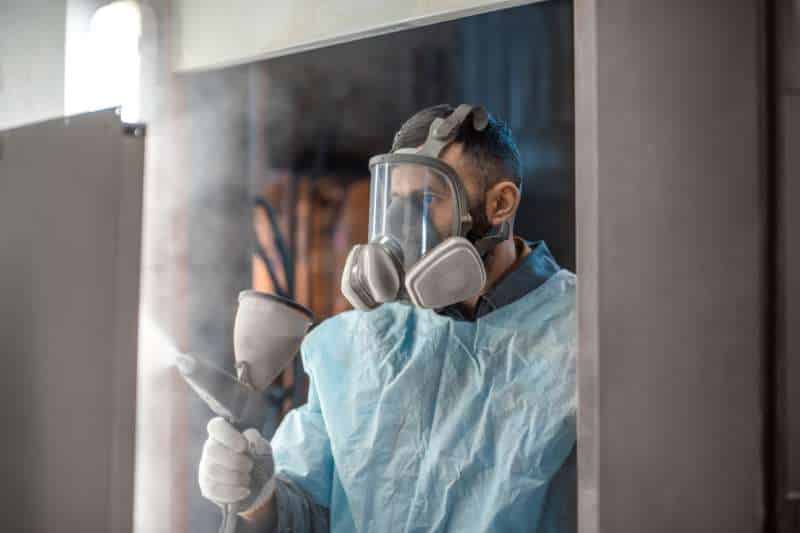Powder Coating: Works, Durability and Its Types

Powder coating is a dry processing process. Since the introduction of North America in the 1960s, it has become very popular. Powder accounts for the use of multiple products, accounting for more than 15 % of the industrial finishing market. More and more companies specify powder coatings to achieve high -quality and durable effects, maximize production, improve efficiency and simplify environmental compliance. For functional (protective) and decorative jewelry, powder coatings have almost unlimited colors and textures, and technological progress has gained excellent performance characteristics.
How Powder Coating Works
Powder coatings are based on a polymer resin system, combined with efficacy, pigment, horizontal agent, flow modified agent and other additives. These ingredients are mixed, cooled and grinded to uniform powder similar to baking powder. A process called electrostatic spray deposition (ESD) is usually used to realize the application of powder coating on the metal substrate. The application method uses a spray gun. The spray gun is applied to the powder particles and then attracted it to the ground. After applying powder coatings, the parts enter the curing oven. When heating, the coating chemical reaction is used to produce a growing molecular chain, which leads to high cross -linking density. These molecular chains are very resistant to decomposition. This type of application is the most common method for applying powder. Powder coatings can also be applied to non -metal substrates, such as plastic and medium -density fiber plates (MDF).
Sometimes powder coatings are applied during the fluidized bed application. The preheating parts are immersed in the motion of fluidization powder and the coating melting, and flows out of the parts. According to the quality and temperature of the parts and the type of powder used, it may require solidification and curing. No matter which application process is used, powder coatings are easy to use, environmental protection, cost benefits and tenacity!
Durability of Powder Coating
Powder coatings are high -quality jewelry found on thousands of products every day. Powder coatings can protect the rough, stronger machinery and household items you depend on daily. The effect it provides is more durable than liquid paint, and it still provides attractive decorations. Due to impact, moisture, chemicals, ultraviolet and other extreme weather conditions, powder coating products are more resistant to the reduction of coating quality. Conversely, this reduces the risks of scratches, debris, abrasions, corrosion, fading and other wear problems.
This is difficult. Looks good. It lasted for a long time. In addition to durable, due to environmental advantages, powder coatings are attractive choices.
Types of Powder Coating
Although the types of various powder coatings are not as good as a solvent -based coating, many polymer resins can be used as powder coatings. It can be divided into two categories: Thermoset and thermoplastic.
Thermosetting Powder Coating
The thermosetting resin can be used as a membrane to form a material and the curing agent of the cross -linked reaction to form insoluble and unavailable hard coatings. Regardless of the high temperature, the coating will not be softened like thermoplastic coating, but can only be decomposed. Because the resin used in thermosetting powder coatings is a precursor with low polymerization and lower molecular weight, the coating has better horizontal characteristics and better decoration. In addition, after curing low molecular measurement, it can form macromolecules of network cross -linking, so the coating has better corrosion resistance and mechanical properties.
Epoxy Powder Coating
Because of its excellent adhesion to metal, corrosion resistance, hardness, flexibility, and impact strength, it is the first variety in thermosetting powder coatings. The preparation of epoxy powder coatings consists of epoxy resin (epoxy resin), curing agent (curing agent), pigment (pigment), fillers (fillers), and other assistants (assistants). The contribution of these components to the performance of the formation of powder coatings is limited and influenced by each other. The right formula is actually the result of the coordination of various components.
Polyester Powder Coating
Compared with other types of powder coatings, polyester powder coatings have unique characteristics. Compared with epoxy resin, it has better weather resistance and ultraviolet resistance [1]. In addition, because polyester resin has a polar group, the powder therapy rate is higher than that of epoxy resin. During the baking process, it is not easy to turn yellow. It has high gloss, good flat and complete paint film and light colors. Usually used in refrigerators, washing machines, vacuum cleaners, instruments, bicycles, furniture and other fields.
Acrylic Powder Coating
There are two types of acrylic resin powder: thermoplastic and Thermoset . The biggest advantage of thermosetting acrylic resin powder coating is that it has excellent weather resistance, color retention, pollution resistance, powerful metal adhesion and excellent film appearance.
Thermoplastic Powder Coating
Thermoplastic powder coatings began to appear in 1950. They melt at the spray temperature and coagulate into a film when cooling. Due to simple processing and spraying methods, you only need to heat, melt, flat, cool or extract powder paint to form a film, and do not require complex curing devices. Most raw materials used are common polymers on the market, and performance requirements can be met under most conditions. However, there are some disadvantages, such as high melting temperature, low coloring level and poor adhesion to the metal surface. However, commonly used thermoplastic powder coatings still show some unique features. Among them, polyamides powder coatings have excellent solvent resistance. Polyethylene fluoride coatings have excellent weather resistance; polyamide has excellent wear resistance; the price/performance ratio of ethylene chloride is very good; thermoplastic polyester powder coating has the advantages of beautiful appearance and high artistic quality. These features make a large part of the coating market for thermoplastic powder coatings.
Polyvinyl Chloride Powder Coating
Polyvinyl powder coatings are one of the cheapest polymers in large -scale production in industries. It has excellent solvent resistance, good corrosion resistance, drug resistance, salt resistance and drug resistance of water and acid, can prevent food pollution and have high heat insulation strength for static spraying. It is mainly used for coating metal mesh, steel furniture, chemical equipment, etc.
Polyethylene Powder Coating
Polyethylene powder coating has excellent corrosion resistance, chemical resistance and excellent electrical insulation materials and ultraviolet radiation resistance. The disadvantage is that the mechanical power is not high and the adhesive in the substrate is poor. It can be used in chemical tanks, impeller, pump, inner wall of the pipeline, instrument shell, sheet metal, internal screens of the refrigerator, automatic parts, etc.
Nylon Powder Coating
Nylon is also called polyamide. Because the N atoms of chlorine on the molecular chain are easy to form hydrogen bonds with hydrogen atoms on the adjacent section, the melting point of polyamide resin is usually higher. Nylon has the advantages of high mechanical strength, impact resistance, hardness, abrasion resistance, low friction coefficient, low dust absorption, etc., which can be used for parts with special requirements. For example, pumping leaf wheels, textile machinery parts, diesel engine startup piston parts, motorcycle propeller leaf wheels, car wheels, motorcycle brackets, agricultural machinery, construction and sports equipment, etc. It is not corroded by mold and does not promote the growth of bacteria due to its saline resistance and inertia of mold and bacteria.
Fluorine Resin Powder Coating
There are many types of fluorine polymers to prepare powder coatings, such as polytetrafluoroethylene (PTFE), PTFCE (PTFCE), polyethylene fluoride (PVDF), etc. The melting point of PTFE is as high as 327 ° C and can be used -250 ~ 250 ° C for a long time. In addition, it has excellent corrosion resistance. Even in Aqua Regia, excellent dielectric characteristics, the extremely low friction coefficient will not be corroded from lubrication, so it is called “plastic king”. It is widely used in oil, chemical corrosion coating, sealing parts, bearing lubrication materials, electronics and electrical materials, ship launch tracks and non -stick coating. The price of polychlorotrifluoroethylene is cheaper than PTFE, and the processing temperature can be cheaper. The coating can be used for a long time for 130 ° C. Its alkaline resistance and hydrogen fluoride resistance is better than acid enamel, hydrochloric acid, dilute sulfuric acid, hydrogen chloride and chloride. It is better than stainless steel equipment. It has been widely used in anti -corrosion equipment for chemical plants, pesticides, pharmaceutical plants, detergent plants, etc. The biggest advantage of polyvinylidene fluoride powder coating is excellent weather resistance. When it is exposed to outdoor, high degradation resistance and high absorption of dust can easily maintain primitive luster.
Chlorinated Polyether Powder Coating
Chlorinated polyether has excellent chemical stability. The coating has good corrosion resistance and anti -falling performance to target a variety of acids, alkali and solvents. Chemical stability is second only to polytetrafluoroethylene, and the mechanical and friction characteristics are also very good. Chlorinated polyether powder coatings are mainly used in chemical equipment, pipe lining, instrumental chip, etc. Adding additives can improve the adhesion of the metal.
Latex Powder Coating
Latex powder is prepared by spraying emulsion. Most of the emulsion is acetate polymer. Paints produced with latex powder are called latex powder coatings. Add clean water and stirring structure at the scene. This is currently the most environmentally friendly paint in wall paint.
The COMPLETE Beginners Guide To Powder Coating
For More Articles Please Visit www.lifestylebuz.com





